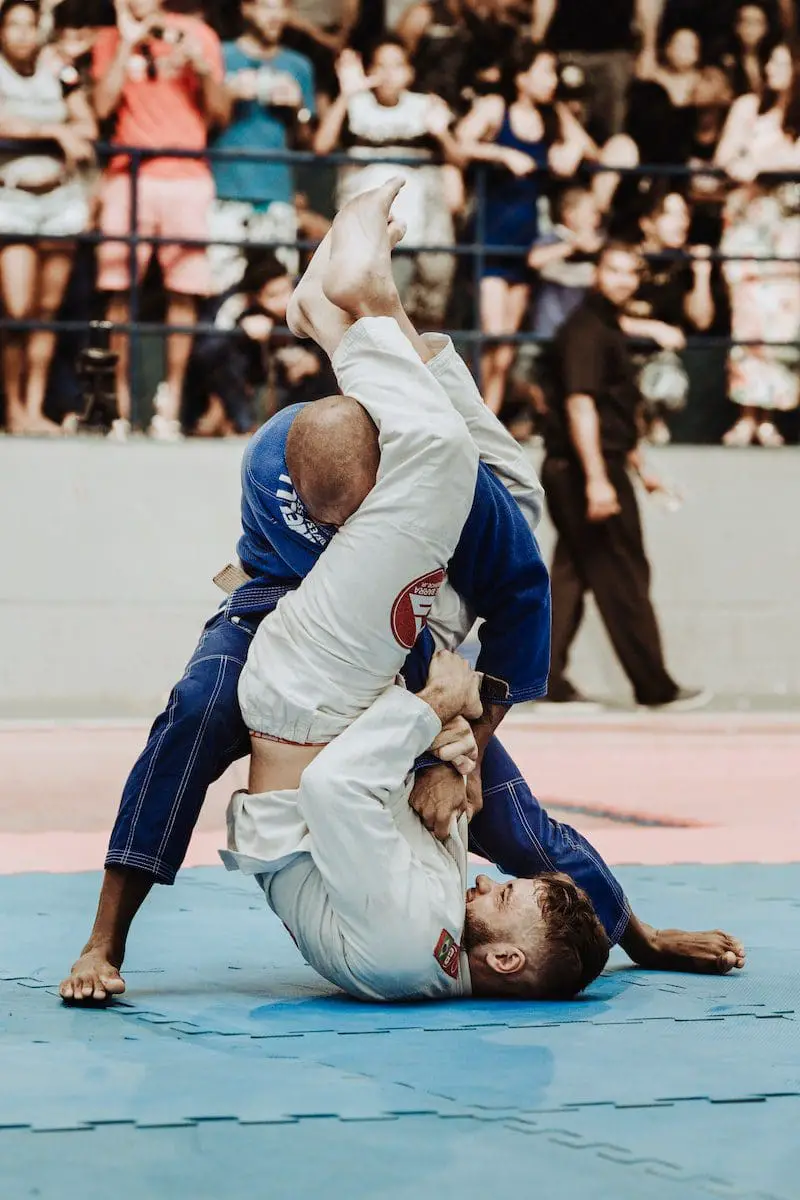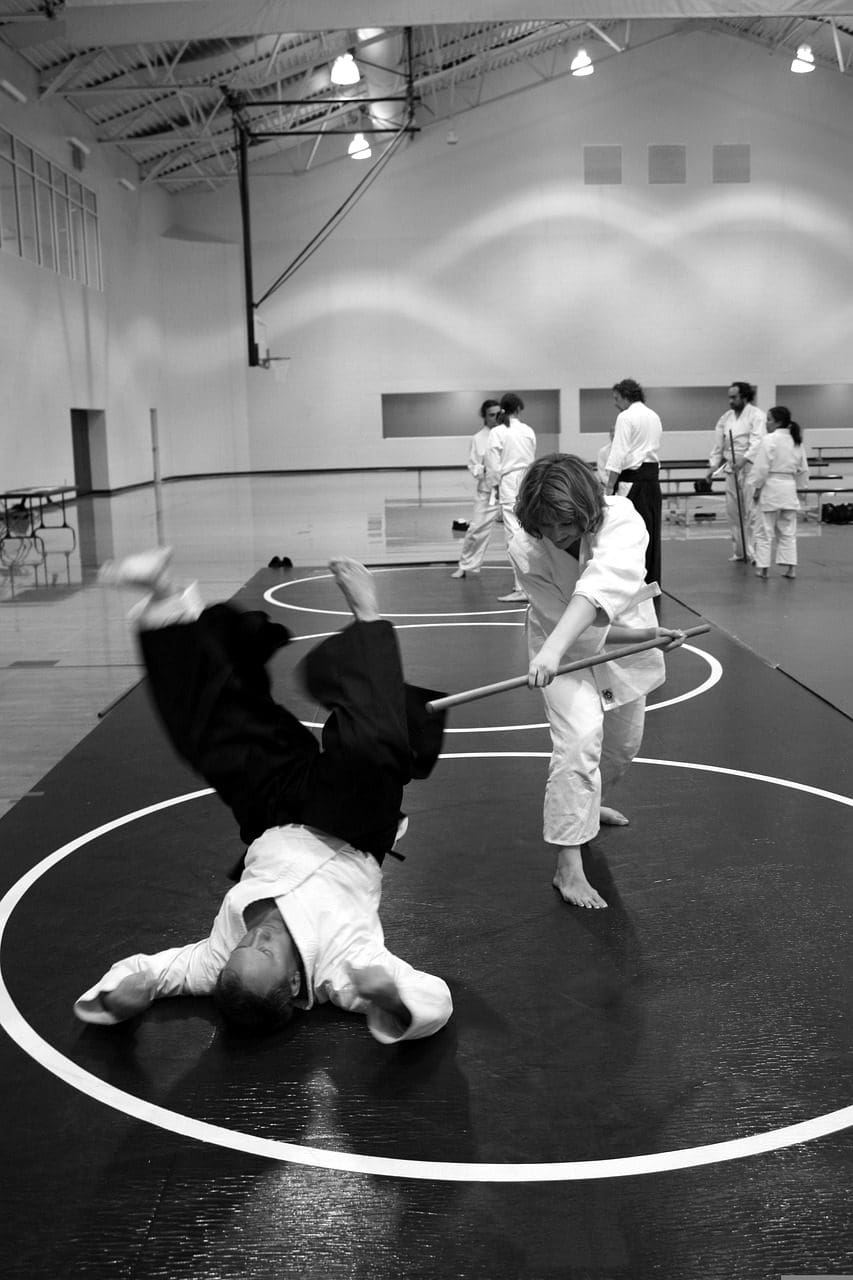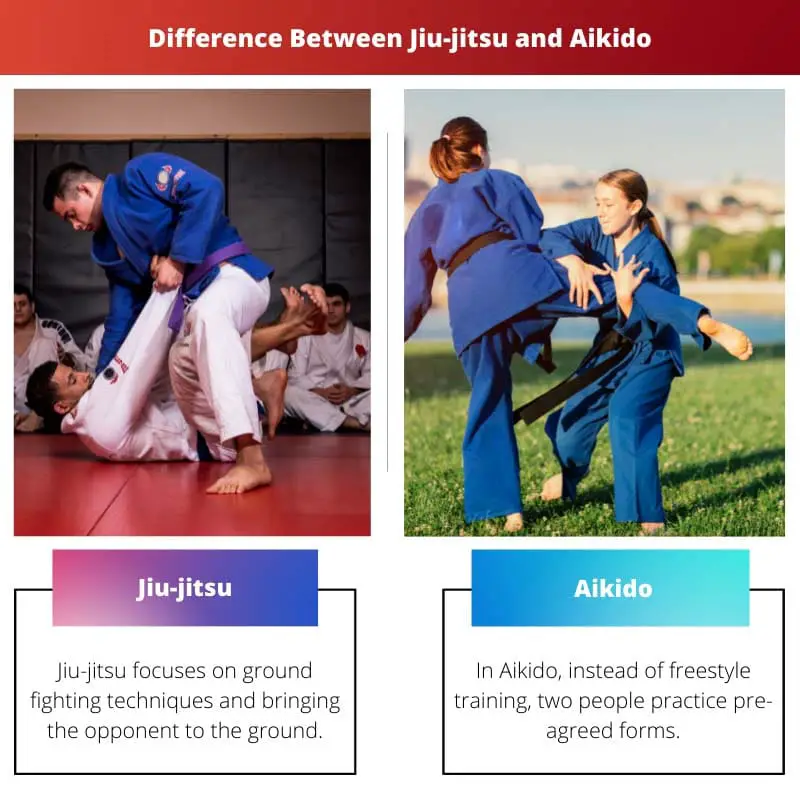Aikido and Jiu-jitsu are popular forms of martial arts that originated in Japan. People get confused between these terms since they have similar movements and philosophies but are different.
However, they have similarities as well. Jiu-jitsu and Aikido are both grappling martial arts. Both of them focus on striking and throwing techniques.
They were evolved for self-defense against an attacker. They are known as soft martial arts since they do not give too much importance to training and strength.
Going by philosophy, it can be said that both aim to live a peaceful life, treat everybody equally, and respect each one. The best part about these martial arts is that they teach a person self-defense, which is the most important and required skill in today’s cruel world.
Key Takeaways
- Jiu-Jitsu is a martial art that focuses on grappling and ground fighting, using joint locks and chokeholds to subdue opponents.
- Aikido is a martial art that emphasizes fluid, circular movements to redirect and use an attacker’s energy against them.
- Both martial arts prioritize self-defense and leverage over brute force but differ in techniques, philosophies, and origins.
Jiu-jitsu vs. Aikido
Jiu-jitsu is a type of martial art. There are five ranks in jiu-jitsu. The order of colors is white, blue, purple, brown and black. In jiu-jitsu, the goal is to bring the rival to the ground. Aikido is another type of martial art. There are six ranks in aikido. The order of colors is white, yellow, orange, blue, brown and black.

Comparison Table
| Parameter of Comparison | Jiu-jitsu | Aikido |
|---|---|---|
| Origination | The term Jiu-jitsu was first heard in 1532. | Aikido originated in the 1920s. |
| Ranking system | 5 ranks are present in Jiu-jitsu. | 6 ranks are present in Aikido |
| Color ranking | The colors in Jiu-jitsu rank from white, blue, purple, brown, and black. | The colors in Aikido go from white, yellow, orange, and blue, followed by brown and black. |
| Techniques | Jiu-jitsu focuses on ground fighting techniques and bringing the opponent to the ground. | In Aikido, instead of freestyle training, two people practice pre-agreed forms. |
| Uniform | The uniform in Jiu-jitsu is kimono or a Brazilian Jiu-jitsu Gi. | A traditional uniform is used in Aikido, mainly a pair of Japanese trousers. |
What is Jiu-jitsu?
Jiu-jitsu is a martial art that includes ground fighting and grappling techniques. It helps to control the opponent and forces him to submit. It is known as a soft and gentle art that permits a weak and small person to defend himself.
Jiu-jitsu uses the principle of pressure, leverage, angles, knowledge of human analysis, and timing that helps to accomplish the opponent’s submission.
Jiu-jitsu is not a mere workout but is known as a ‘human chess’ that exercises the mind and the body.
Jiu-jitsu has several physical benefits. It is an amalgamation of explosive and dynamic movements.
Because a person continuously responds to the opponent’s movements, it helps to enhance muscle tone, to reduce weight, and improve balance.
Speaking about the mental benefits, Jiu-jitsu is a good mental workout. It teaches one a new activity that has uncountable movements.
Since one is constantly planning his next movement, it helps to expand a person’s reasoning skills. It helps one to develop the ability to think quickly and respond immediately. It also teaches one to be in a calm and controlled position when he is defending himself.

What is Aikido?
Aikido is the most practiced martial art in the world. That was founded by Morihei Ueshiba, also known as O Sensei. Aikido is non-aggressive, including striking, joint locking, pinning, and throwing techniques.
It also trains one to use the traditional weapons of Japan, such as knives, staffs, and swords. It is a posture, redirection, balance, avoidance, and distancing skill. It also focuses on the evolution of physical and also internal unity. It also teaches one to dominate aggressiveness.
Aikido is not a part of sports. There is no competition in this martial art, and it focuses on a person’s personal development.
It aims at teaching personal self-defense. Winning or losing does not hold any importance here, so men, women, and children of all ages can practice Aikido together.
In real-life situations, Aikido is applicable and very effective. If a person has conquered the skill of Aikido, he need not unite it with other tactics or techniques to make Aikido successful.
He need not even go for ground fighting, kicking, or striking techniques.

Main Differences Between Jiu-jitsu and Aikido
- Jiu-jitsu was mainly used for fights and was combated several years ago. On the other hand, Aikido focuses on self-defense.
- Both Jiu-jitsu and Aikido use colors for ranking. In Jiu-jitsu, colors go from white to blue and purple, followed by brown and black. However, in Aikido, colors go from white, then yellow, orange, and blue, followed by brown and black.
- Aikido has no role when discussing competitions since it is a self-defense martial art. In Jiu-jitsu, some competitions are divided into several tournaments. One can win here by submissions or points.
- Aikido is mainly a response to an opponent’s charge, so if the opponent attacks one differently, Aikido shall not have any answer. On the other hand, Jiu-jitsu prepares one for unpredictable charges and attacks and hence is more complicated.
- The number of ranks in Jiu-jitsu is five, whereas in Aikido, it is six.


I find the insights into Jiu-jitsu’s physical and mental benefits extremely valuable. It’s a well-rounded discipline.
Definitely, it fosters a unique combination of physical strength and mental agility.
Absolutely, the mental and physical training benefits are what make Jiu-jitsu such a compelling art form.
The historical context provided about Jiu-jitsu and Aikido’s evolution is truly enlightening. It adds depth to these disciplines.
Absolutely, understanding their origins adds a whole new dimension to their practice.
The distinctions between the historical uses of Jiu-jitsu and the focus on self-defense in Aikido are fascinating. It reveals the varied histories of these martial arts.
The evolution of these arts over time is truly fascinating.
Absolutely, the contrast in their initial purposes is quite intriguing.
I was hoping for more in-depth details about Aikido and Jiu-jitsu, especially regarding their historical contexts and cultural significances.
I appreciate learning about the historical origins and philosophies of Jiu-jitsu and Aikido. It’s intriguing how they share some commonalities despite differing in techniques and focus.
Absolutely, the emphasis on self-defense and non-aggression is commendable.
I completely agree. The depth of these martial arts’ principles makes them so fascinating.
The historical context and comparisons are quite enlightening. It’s great to see the depth of these martial arts laid out so clearly.
The analysis is exceptionally well-presented, making it easy to grasp the nuances of these martial arts.
Absolutely, they have such rich histories and philosophies.
I find the non-aggressive nature of Aikido and its focus on internal unity and balance captivating. It’s truly a form of art.
Absolutely, the internal philosophies of Aikido are truly captivating.
I think the detailed comparison table is extremely helpful in understanding the distinctions between Jiu-jitsu and Aikido. It’s a great guide for anyone interested in learning more.
The ranking system and uniform differences are particularly interesting. It’s a great starting point for those wanting to delve deeper.
Absolutely, the comprehensive comparison makes it easier to grasp the differences.
I expected a more in-depth analysis of the cultural and philosophical differences between Aikido and Jiu-jitsu.
The informative insights into Aikido and its non-competitive nature are eye-opening. It adds a new layer to the understanding of martial arts.
Absolutely, the absence of competition in Aikido really sets it apart from other martial arts.
The focus on personal development and self-defense makes Aikido truly unique.